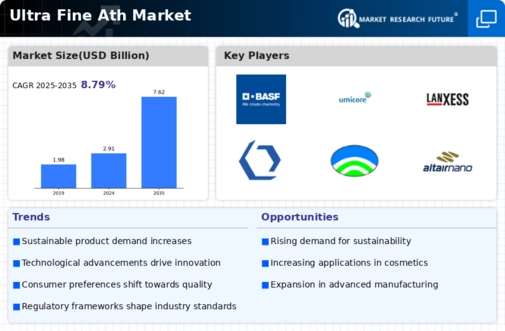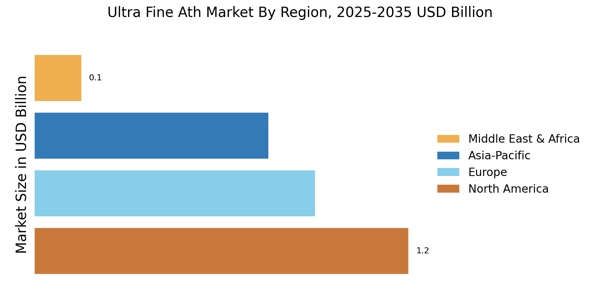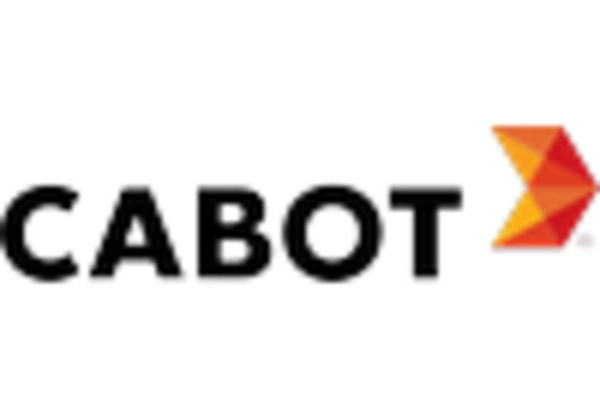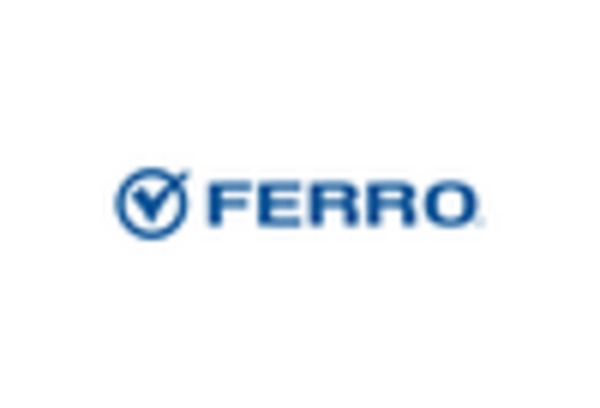Growth in End-User Industries
The Ultra Fine Ath Market is benefiting from the expansion of various end-user industries, including construction, healthcare, and consumer goods. As these sectors grow, the demand for ultra-fine materials is expected to rise correspondingly. For example, in the construction industry, ultra-fine materials are increasingly used in concrete and insulation products to enhance performance and energy efficiency. Similarly, in healthcare, ultra-fine materials are being utilized in medical devices and diagnostics, improving patient outcomes. This growth across multiple sectors indicates a promising future for the Ultra Fine Ath Market, as it adapts to meet the diverse needs of its clients.
Advancements in Nanotechnology
Nanotechnology is playing a pivotal role in the evolution of the Ultra Fine Ath Market. The ability to manipulate materials at the nanoscale allows for the creation of ultra-fine products with enhanced properties, such as increased strength, reduced weight, and improved thermal stability. Recent advancements in nanotechnology have led to the development of new applications in fields like medicine, electronics, and energy storage. For example, ultra-fine materials are being utilized in drug delivery systems, which can significantly improve the efficacy of treatments. The ongoing research and development in this area suggest that the Ultra Fine Ath Market will continue to expand as new technologies emerge.
Consumer Awareness and Preferences
Consumer awareness regarding the benefits of ultra-fine materials is on the rise, significantly impacting the Ultra Fine Ath Market. As consumers become more informed about the advantages of using ultra-fine products, such as improved performance and sustainability, their preferences are shifting towards these materials. This trend is particularly evident in sectors like cosmetics and personal care, where ultra-fine particles are used to enhance product quality and effectiveness. Market Research Future indicates that consumers are willing to pay a premium for products that utilize advanced materials, suggesting a lucrative opportunity for businesses within the Ultra Fine Ath Market to cater to this growing demand.
Environmental Regulations and Compliance
The Ultra Fine Ath Market is increasingly influenced by stringent environmental regulations aimed at reducing pollution and promoting sustainability. Governments worldwide are implementing policies that encourage the use of eco-friendly materials and processes. This regulatory landscape is pushing manufacturers to adopt ultra-fine materials that are not only efficient but also environmentally friendly. For instance, the use of ultra-fine particles in coatings and paints can lead to lower volatile organic compound emissions. As a result, companies that prioritize compliance with these regulations are likely to gain a competitive edge in the Ultra Fine Ath Market, driving further innovation and market growth.
Rising Demand for High-Performance Materials
The Ultra Fine Ath Market is experiencing a notable increase in demand for high-performance materials across various sectors, including automotive, aerospace, and electronics. This demand is driven by the need for lightweight, durable, and efficient materials that can enhance product performance. For instance, the automotive sector is increasingly adopting ultra-fine materials to improve fuel efficiency and reduce emissions. According to recent data, the market for ultra-fine materials is projected to grow at a compound annual growth rate of approximately 7% over the next five years. This trend indicates a robust potential for the Ultra Fine Ath Market as manufacturers seek to innovate and meet evolving consumer expectations.


















Leave a Comment